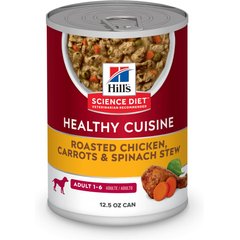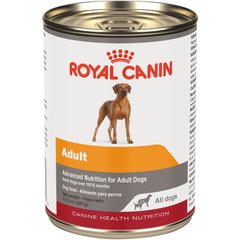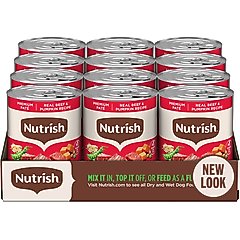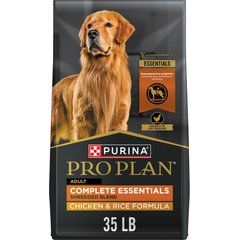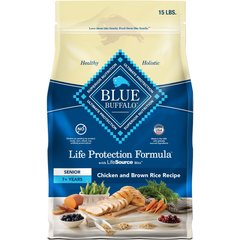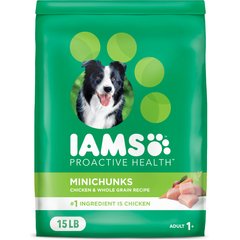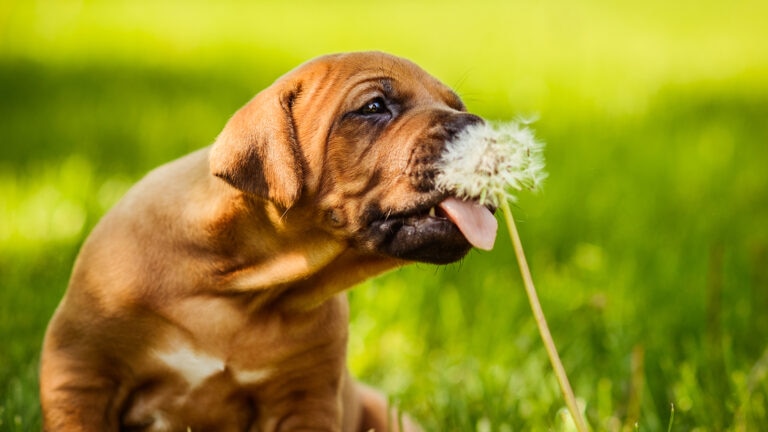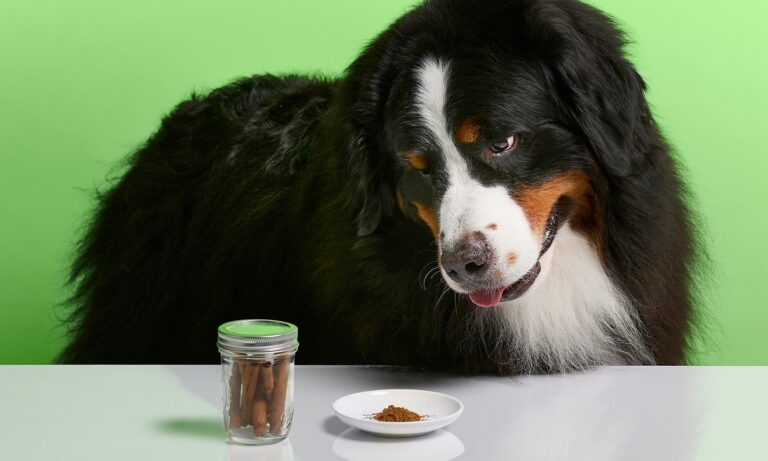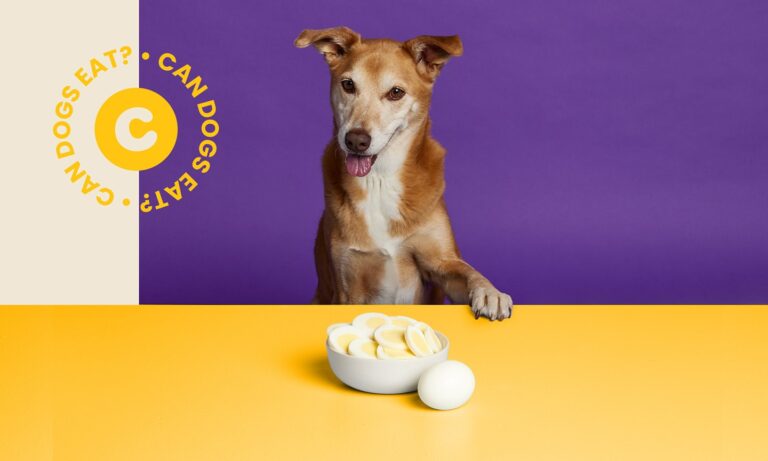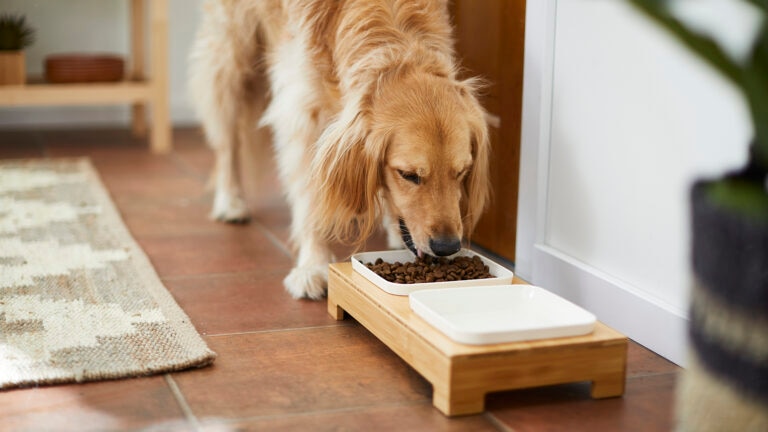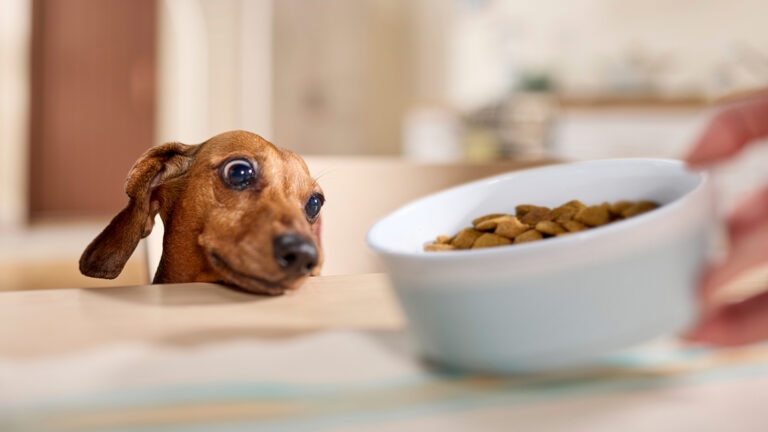The Benefits of Mixing Wet and Dry Dog Food
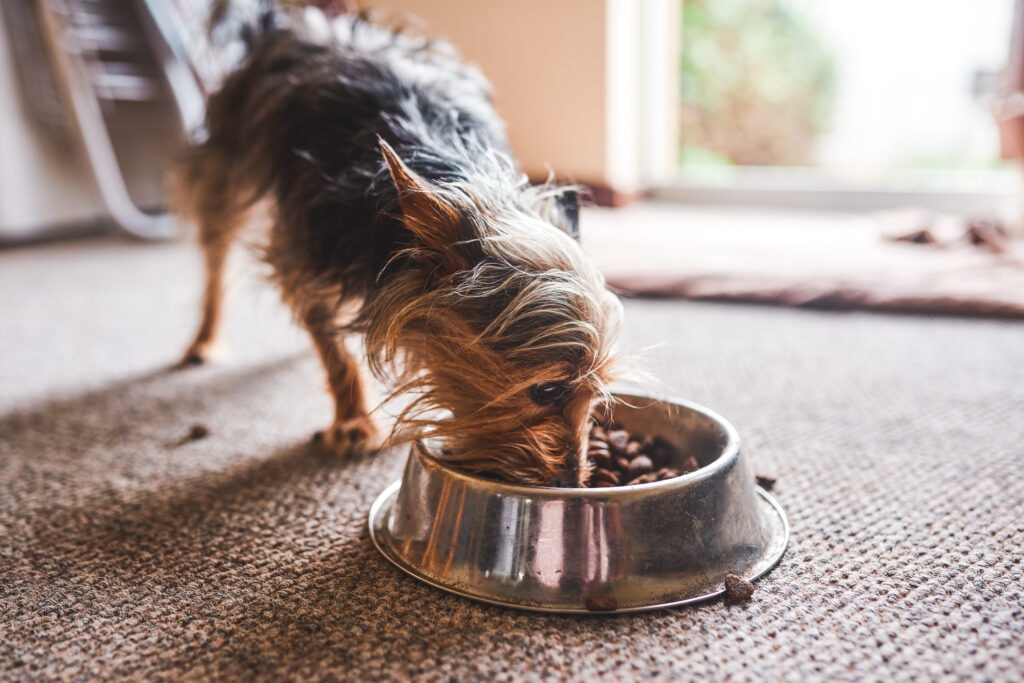
Photo by Moyo Studio via iStock / Getty Images Plus
Is it safe to mix wet and dry food for your dog? Is it even worth mixing the two?
Yes and yes!
Read on to learn more about the benefits of mixing wet and dry dog food, when it makes sense to mix them, and how to do it properly.
Recommended Products
Can I Mix Wet and Dry Dog Food?
Pet parents might consider mixing wet food and dry kibble for a number of reasons. Here are some benefits of mixing wet and dry pet food:
It Increases Palatability and Encourages Picky Eaters
Mixing wet food into dry food can make the diet more palatable. This is especially helpful for senior dogs with a reduced appetite—a little bit of delightfully smelly wet dog food can make it that much more tempting.
It Helps Hydrate
Adding some wet food to the dry food increases the water intake. According to the Pet Food Institute, typical dry dog food contains only 10–12% water, while wet formulations are generally 75–78% water by weight.
It Helps With Weight Management
Adding wet food to your furry friend’s dry kibble can help with weight loss. This is because wet food has more water, so dogs feel full faster and end up eating less.
For dogs with health conditions that need to gain weight, the opposite is also true: mixing some dry dog food into their canned food is a good way to increase their caloric intake. Because it doesn’t have as much water, dry food packs more calories into the same amount of food by weight.
It’s a Cost-Effective Combination
One of the main drawbacks to wet food is its price. On average, wet food costs more per ounce than the dry food options. However, this does depend somewhat on which options you buy. A budget wet food may end up similar in cost to a premium kibble. If budget is the main concern, ask your vet to recommend options that cover the bases at your price point.
Recommended Products
How to Mix Dry Dog Food with Wet Food
The exact ratio of wet food to dry food depends, but the general rule is that dry food should comprise about 75% of the total weight of the meal, leaving 25% for wet food. The ratio may change for senior dogs that need extra energy, or for overweight dogs where weight control is a concern. It is always a great idea to consult your vet on the right ratio for your fur baby.
If a mixed diet is new to your dog, transition them slowly to the new food. This will help them get used to the new diet and reduce the risk of stomach upset. One good approach is to add wet food slowly to the dry food over the first week, gradually working up to the right ratio.
Puppies can also eat a combo of wet and dry food once they’re weaned and generally throughout their life.
Tips for Mixing Canned Dog Food with Dry Kibble
- Speak with your veterinarian about what type of food and how many calories per day your pet should be eating, so you’re certain you’re feeding enough to meet your pet’s nutritional needs, but not too much. (If you’re not comfortable calculating the ratio of wet to dry pet food you should offer at mealtime when you’re mixing, they’ll help with that, too.)
- Measure your pet’s food with an appropriate measuring device.
Consider shelf life. Mixed wet and dry food should never be left to sit out. Discard uneaten food within 30 minutes after it has been put out at room temperature. You can either make a new serving for each meal or make a bigger batch in the morning, cover the extra servings for the day, and place them covered in the refrigerator. - Mixing foods can be done for dogs of any age, but ensure the food you’re using is for your pet’s appropriate life stage.
Mixing When Your Dog Is on a Therapeutic Diet
If your dog is on a therapeutic diet, it’s very important that you don’t introduce a new food. Use only the therapeutic diet in both wet and dry forms.
For example, if your pooch is on dry Hill’s Prescription Diet z/d Skin/Food Sensitivities dry dog food due to a food allergy, you should only mix it with Hill’s Prescription Diet z/d Skin/Food Sensitivities canned dog food, or you run the risk of negating the beneficial effect of the diet.
Mixing in a different type of food, even if it is labeled for weight management or urinary care, could lead to undesirable weight changes or urinary problems.
Other Helpful Facts about Wet Dog Food
Pet parents consider all sorts of issues when making decisions about what they feed their doggy or kitty. If any of the following are areas of concern, this info may put your mind at ease.
Dental Health
You don’t need to be concerned about creating any new dental issues when it comes to the type of food you select. Feeding your pooch regular dry food may not do much to keep a pet’s teeth clean, though some research indicates that larger-size kibble may be helpful.
Mixing wet and dry food or even switching over entirely to wet food shouldn’t make much of a difference for your dog’s teeth. Keep in mind we’re talking about regular food, not foods that have been designed specifically to improve dental health.
This emphasizes the importance of annual, routine dental cleanings with your veterinarian to keep your pet’s teeth healthy.
Preservatives
If you’re worried that adding some wet food into your pooch’s kibble ups their preservative intake, rest easy.
Mixing wet and dry dog food and cat food is safe for pets as long as both products are high-quality and are complete and balanced to meet your pet’s nutritional needs. Want to make sure you’re on the right track with that? Learn more about nutrition for your dog and understand what makes a meal balanced and complete, as well as AAFCO standards.
